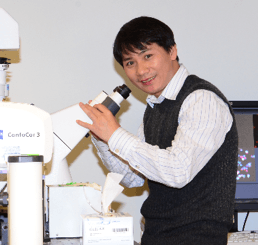Blog Layout
New ways to combat deterioration of the aging islet cells
Enming Zhang, Lund university

Hjelt grant holder 2018
Enming Zhang
Lund University
Could rejuvenating treatment reverse diabetes?
The risk of type 2-diabetes tends to increase following the process of aging. Could there be a way to rejuvenate old insulin producing cells and restore its capacity? In a new project funded by the Hjelt Foundation, researcher Enming Zhang will study the anti-diabetic effects of GDF11, a protein that has lately been widely discussed for its anti-aging qualities.
GDF11 (Growth differentiation factor 11) has been identified as a rejuvenating factor that can reverse aging in muscles, heart and nerve cells in rodents. In 2014, GDF11 was described as a life extension factor in some publications based on the results of experiments with mice. The findings were chosen as the ”scientific breakthrough of the year” by the scientifical journal Science. Later studies have questioned these findings but still…
– There is a debate about the functions of GDF11- anti-aging or pro-aging. Here we would like to just call GDF11 a circulating factor in the blood, and we would like to study its anti-diabetic effects, says Enmin Zhang.
The role of GDF11 in protection against type-2 diabetes is unknown.
– The aim of our study is to find new ways to combat deterioration of the aging islet in the pancreas that contains the insulin producing cells. We hypothesize that this is a cause to impairments in both insulin sensing and the capacity for insulin secretion.
Could it be that high levels of GDF11 is good and low levels is bad…?
– We would say that low level is bad for blood glucose control, but we don’t know if high level is good. As a part of this project we will try to figure out how to stimulate GDF11 production in a diabetic model.
Preliminary data show that GDF11 expression is suppressed in type-2 diabetic islets from human donors.
– Our main proposal is that GDF11 is capable of reprograming aged human islet cells or insulin targeting cells towards a juvenile state, and thereby reinstalling a series of cell functions e.g. insulin secretion, metabolism and insulin sensitivity.
The project will proceed in two steps. First they aim to explore the rejuvenating effect of GDF11 on aged diabetic islets in rodents and humans, and then they intend to investigate the signaling pathways in the aged cell when stimulating with the rejuvenating substans, GDF11.
– We hope this study will bridge the gap for finding use of GDF11 in the treatment of the aging-related component of type-2 diabetes, Enming Zhang ends.
SPINA BIFIDA FOUNDATION
DIABETES FOUNDATION
ART FOUNDATION
© 2025
Hjelt Foundations | Webdesign by Delta
